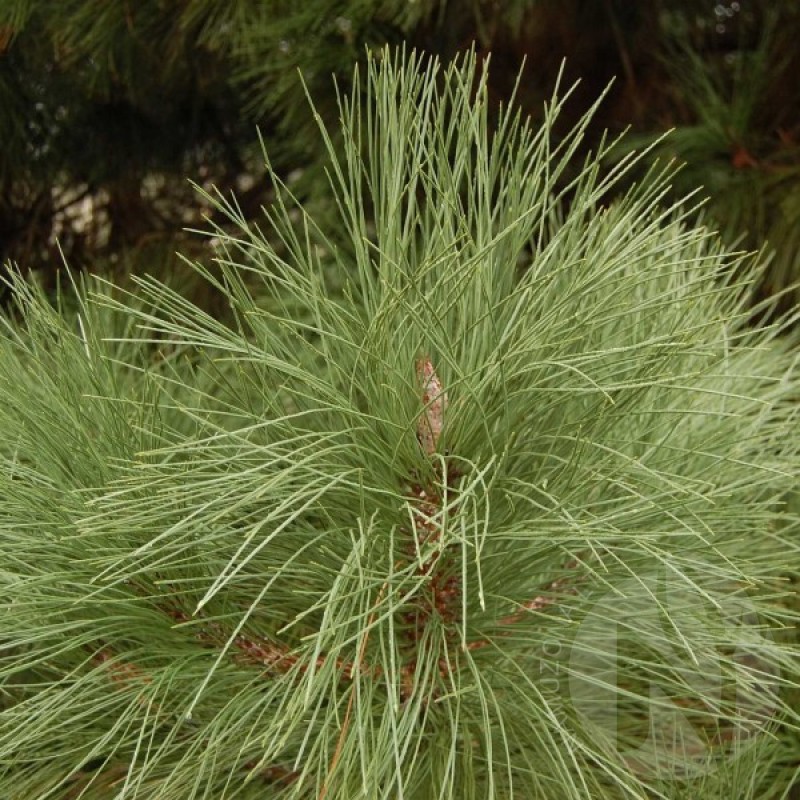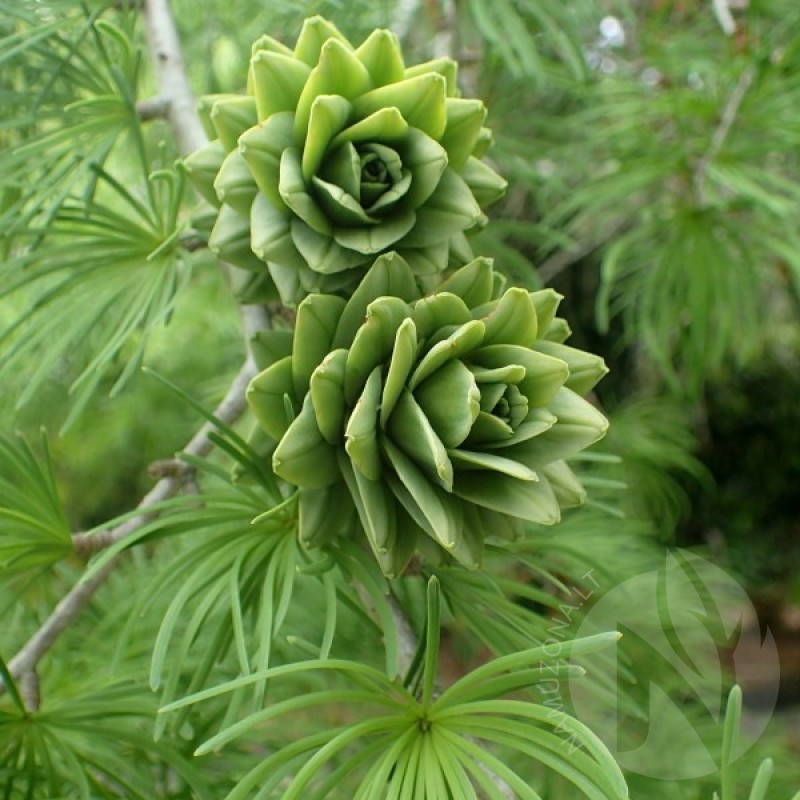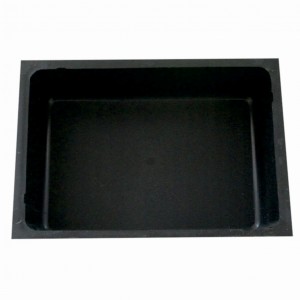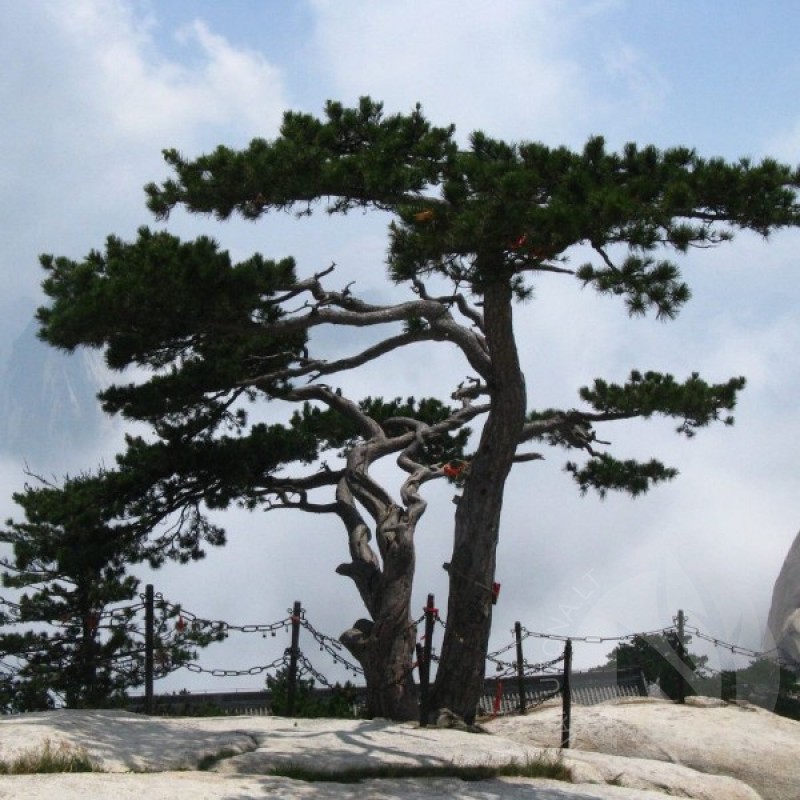
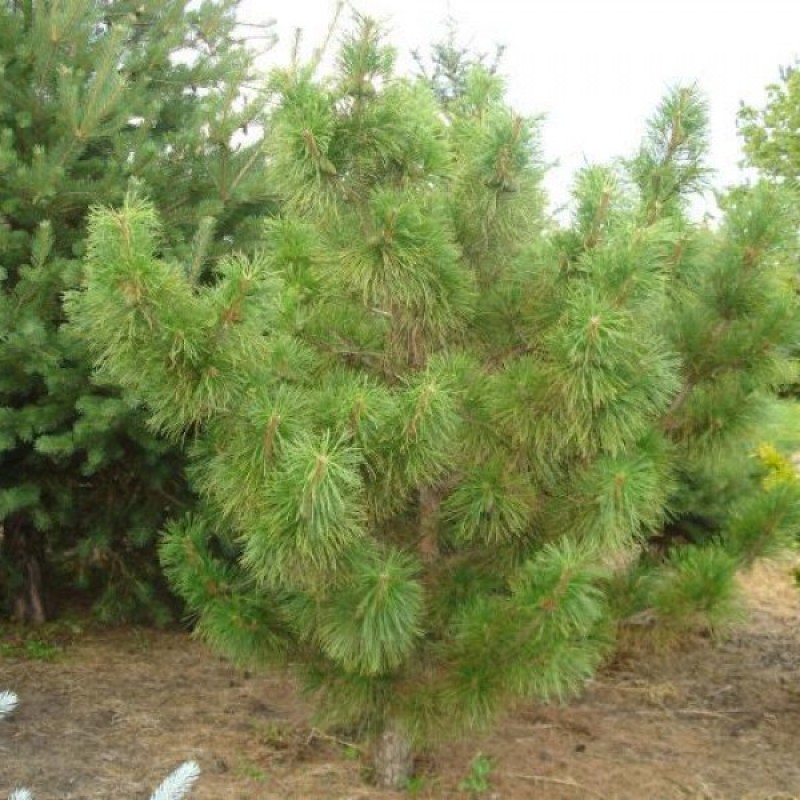
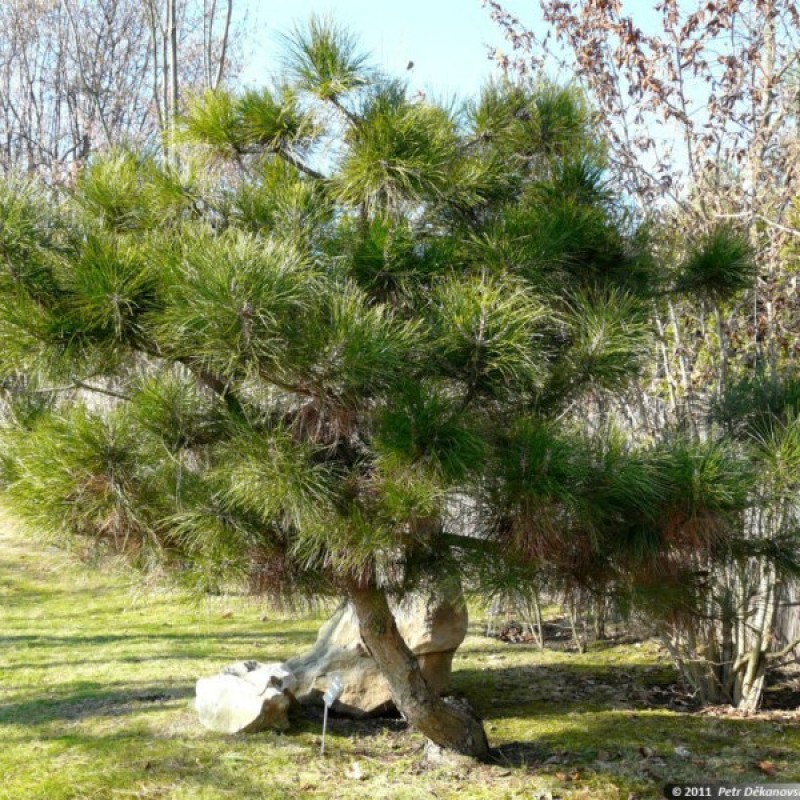
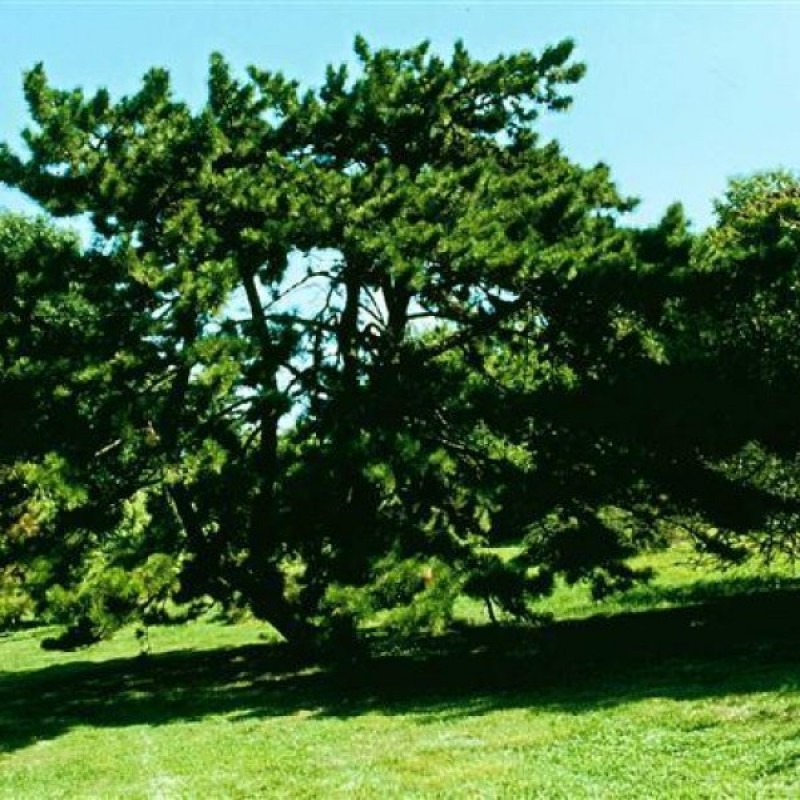
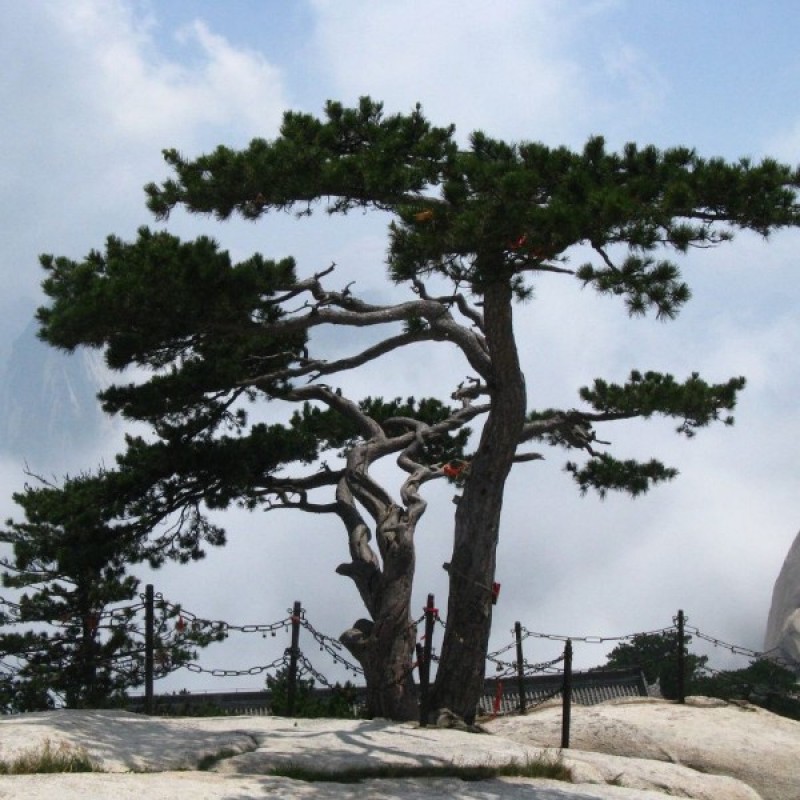
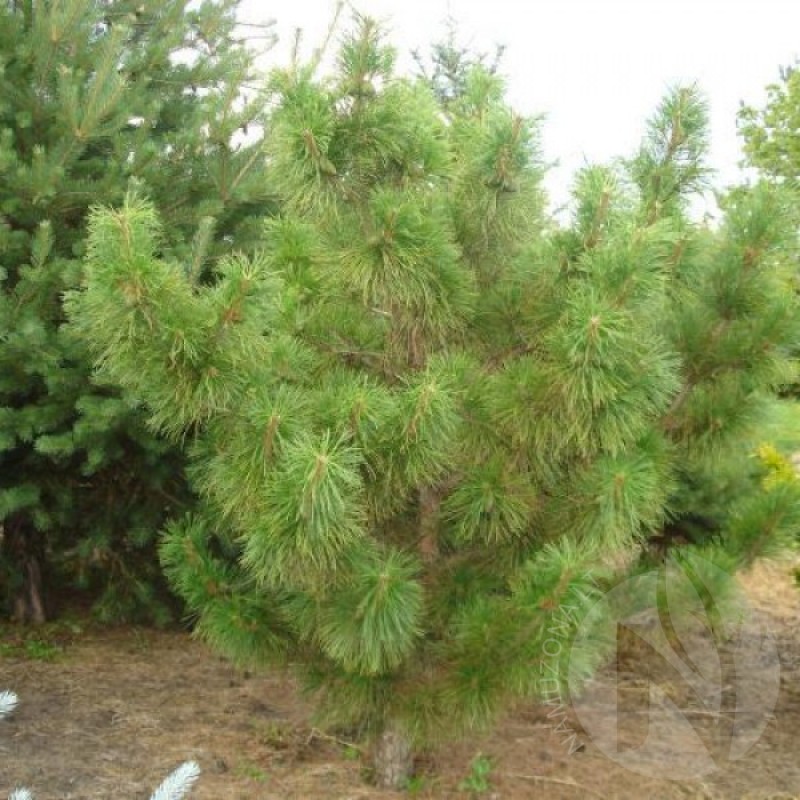
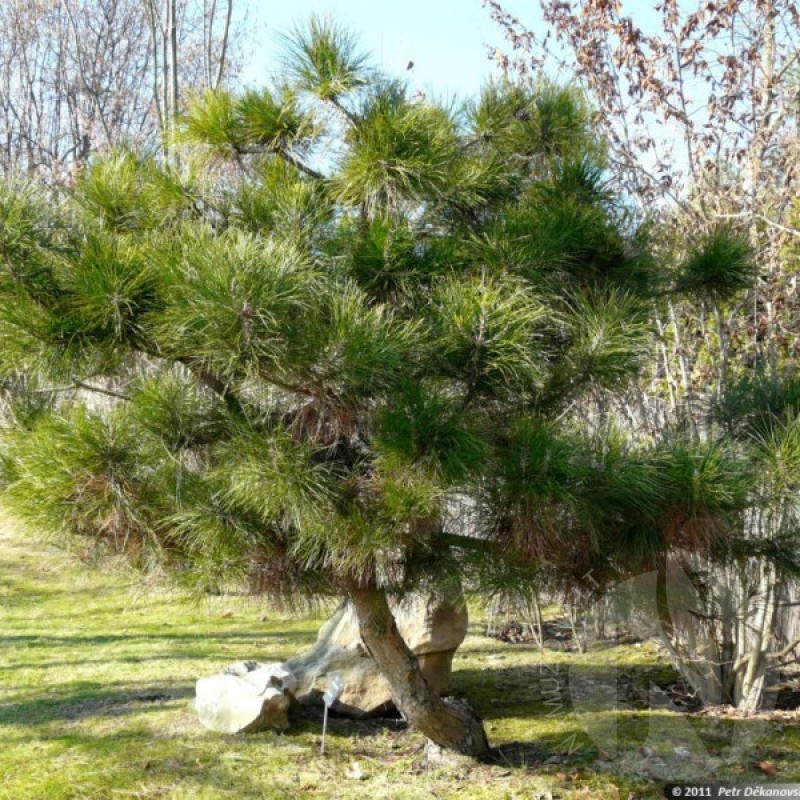
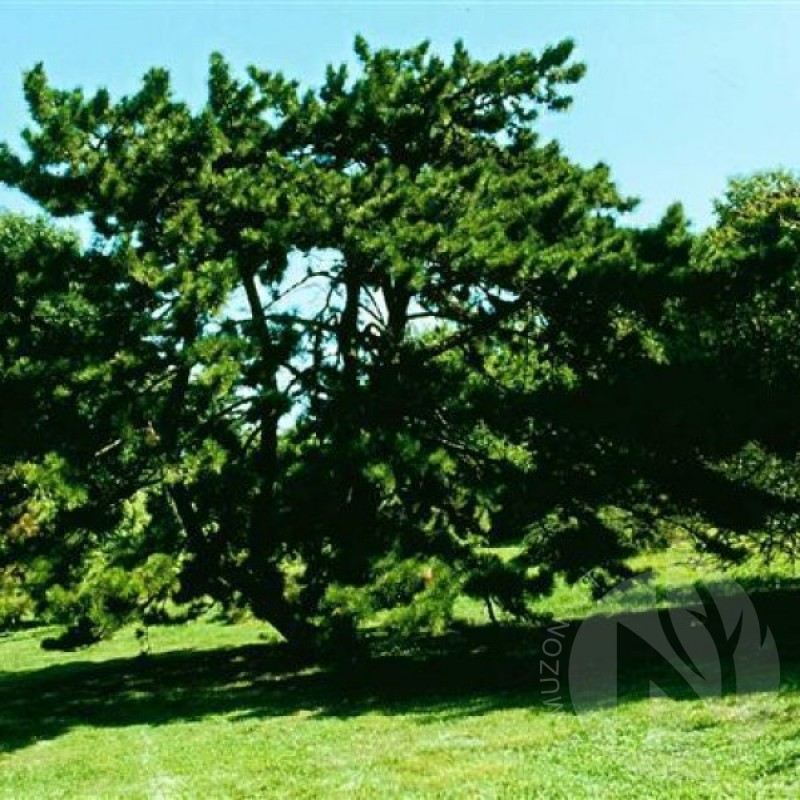
PAY ATTENTION!
All seeds (except SOLD OUT) are available for immediate shipping and will be dispatched within 1-2 business days.
INFORMATION NEEDED? PLEASE CONTACT US NOW!
The broad-spreading habit and handsome bark of this medium-sized evergreen recall those of Japanese black pine Pinus thunbergii and Japanese red pine P. densiflora. It is native to mountains and valleys of central and northern China.
Medium to long, dark green needles densely clothe the long, horizontal to ascending branches of this pine. The needles occur in bundles of two. In spring, tiny male cones and relatively conical to ovoid female cones appear near the branch tips. The female cones are sheathed with fleshy green scales that turn woody and brown as they mature. Each scale ends in a short spine. Two-year-old female cones open their scales to shed winged seeds before dropping from the tree.
Conical and low-branched when young, this variable pine often develops a picturesque canopy with sparse winding branches. It usually sheds its lower branches, exposing the single or multi-branched, gray-barked trunk. The scaly bark often flakes to reveal reddish underlayers.
This cold-hardy pine does well in full sun and moist, well-drained soil. It fares poorly in hot harsh climates. Its striking, often umbrella-like habit suits it for use as a specimen or bonsai plant.
Genus - Pinus
Species - Tabuliformis
Common name - Chinese Red Pine
Pre-Treatment - Required
Hardiness zones - 5 - 7
Height - 30'-60' / 9 - 18 m
Spread - 20'-40' / 6 - 12 m
Plant type - Tree
Vegetation type - Evergreen
Exposure - Full Sun
Growth rate - Medium
Soil PH - Acidic, Neutral
Soil type - Loam, Well Drained
Water requirements - Average Water
Landscape uses - Feature Plant, Topiary / Bonsai / Espalier
Leaf / Flower color - Green / --
GERMINATION INSTRUCTIONS
1. Place the seeds in a container with tepid water and soak them for 24 hours.
2. Put the seeds in a small plastic bag and cover with damp sand. Place the bag holding the seeds in the refrigerator for one month to stratify the seeds, which is preserving seeds in layers of moisture-laden peat, soil or sand. Check the sand and water as needed to maintain moisture. Don't allow the seeds to get soaked.
3. Fill small pots with compost. Place one or two pine seeds on top of the compost in each pot, then cover the seeds with 5 mm layer of sand.
4. Water the sand and compost to add moisture, then place the pots in a warm, sunny location. As the seedlings emerge and grow, the soil needs to remain moist, not wet.
5. Repot the pine trees into medium-sized pots in the fall. Grow them in the pots for the following season until they are large and strong enough for transplanting into the landscape.
Atsiliepimų apie šią prekę kol kas nėra.
No questions about this product.

